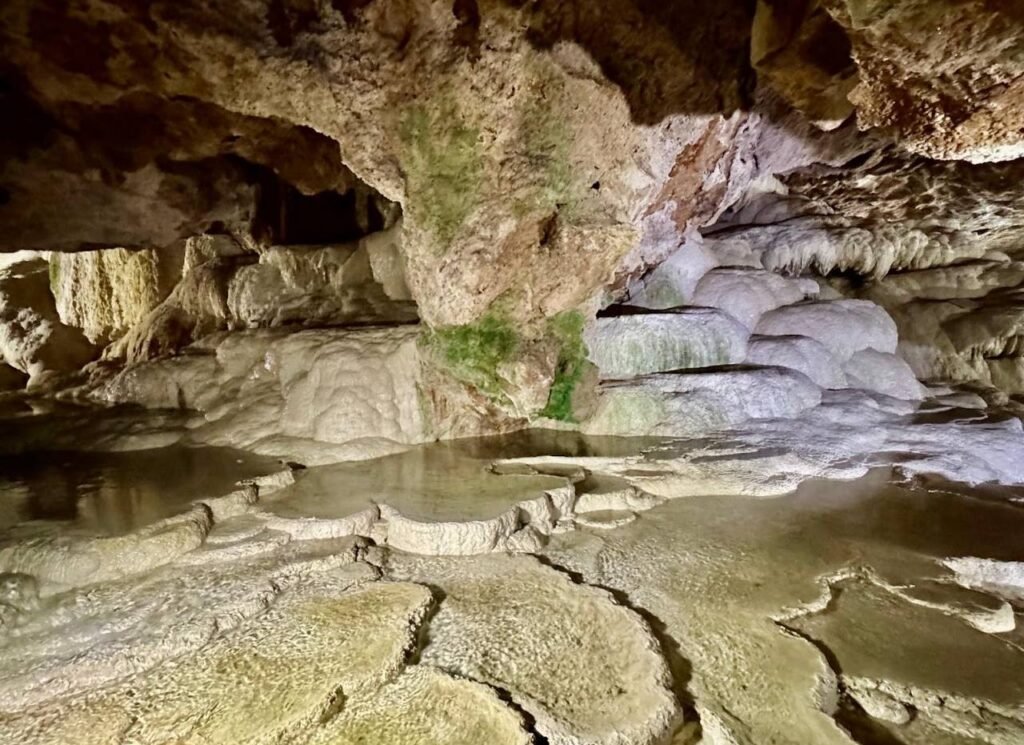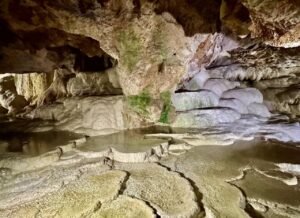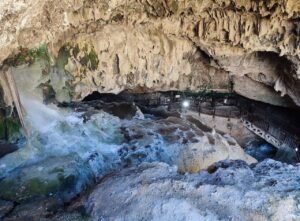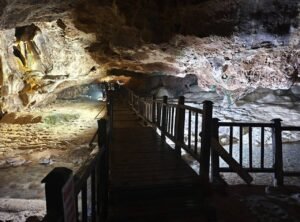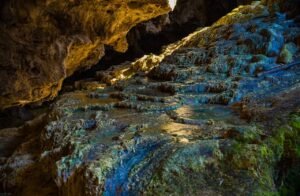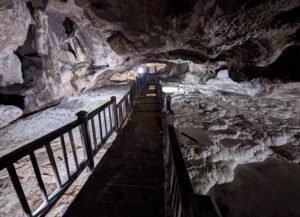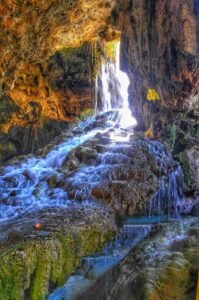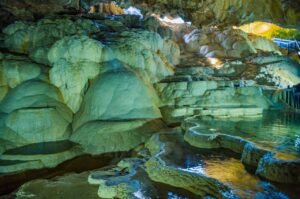Description
Discovering the Hidden Jewel of Denizli: Kaklık Cave
Nestled in the heart of Turkey’s Aegean region, the province of Denizli is most famous for the stunning white travertine terraces of Pamukkale. Yet, just a short drive from this world-renowned UNESCO site lies another natural wonder that remains a well-kept secret — Kaklık Cave (Turkish: Kaklık Mağarası). Often dubbed “the underground Pamukkale,” Kaklık Cave offers a surreal experience of cascading travertines, crystal-clear thermal pools, and otherworldly formations — all hidden beneath the Earth’s surface.
Whether you’re a nature enthusiast, a photography lover, or simply looking to explore beyond the beaten path, Kaklık Cave offers a unique opportunity to witness the mysterious beauty of subterranean landscapes in an accessible and serene setting.
A Natural Wonder Formed Over Thousands of Years
Kaklık Cave is located near the village of Kaklık, approximately 30 kilometers from the city center of Denizli and about 45 kilometers from Pamukkale. It was discovered more widely in recent decades, and in 2002, it was opened to tourism after development works made it safe and accessible.
The cave was formed through a process known as karstification — the slow dissolution of soluble rocks such as limestone and dolomite by mildly acidic rainwater. Over thousands of years, underground water has carved out vast chambers and tunnels, while also leaving behind stunning travertine formations, stalactites, stalagmites, and a thermal lake. The process is very similar to what formed Pamukkale, but Kaklık Cave provides a rare underground perspective on this phenomenon.
What truly sets Kaklık Cave apart is its active travertine terraces, which are still being formed today. These calcium-rich deposits, created by the hot spring water flowing through the cave, shimmer with white, cream, and amber hues — a breathtaking sight under the cave’s natural and installed lighting.
What to Expect When Visiting
Upon arrival at Kaklık Cave, you’ll be welcomed by a small visitor center and landscaped grounds. The entrance to the cave is surprisingly modest, but as you descend a spiral staircase into the depths, the landscape opens up dramatically into a wide chamber full of surreal natural architecture.
The inside of the cave is warm and humid, maintained by the thermal waters that flow throughout. The air carries a faint but natural smell of sulfur due to the mineral-rich spring, which is thought to have therapeutic properties.
Wooden walkways and observation decks allow visitors to explore the cave safely without disturbing the delicate environment. From various angles, you can admire:
-
Travertine walls that glisten with moisture and mineral deposits
-
Thermal pools with crystal-clear, turquoise water
-
Delicate formations such as stalactites, stalagmites, and flowstones
-
Sunlight streaming in from the cave’s ceiling, illuminating mist and steam rising from the warm water
The cave’s ambient lighting adds a mystical quality to the experience, highlighting the unique textures and patterns formed by centuries of mineral deposition.
Health and Wellness Aspects
Just like Pamukkale, the thermal waters of Kaklık Cave are rich in minerals, particularly calcium carbonate, and have been believed to have healing effects for centuries. Locals and travelers alike come here seeking relief from skin conditions, rheumatism, and respiratory problems.
While bathing is not allowed inside the cave itself, there are thermal pools outside where visitors can soak their feet and enjoy the benefits of the mineral water. These small pools offer a peaceful experience surrounded by nature, making it a perfect stop for relaxation and rejuvenation.
A Photographer’s Paradise
Kaklık Cave is a dream for photographers. The combination of natural and artificial light creates an ethereal environment perfect for capturing dramatic images. Whether you’re using a professional camera or just a smartphone, the vibrant colors of the mineral deposits, the reflections in the water, and the textures of the formations provide endless inspiration.
Due to the humidity and steam in the cave, however, it’s recommended to bring protective gear for your equipment and to be cautious of slippery surfaces.
Practical Information for Visitors
-
Location: Kaklık Village, Honaz District, Denizli Province, Turkey
-
Distance: 30 km from Denizli, 45 km from Pamukkale
-
Opening Hours: Typically 9:00 AM – 7:00 PM (hours may vary seasonally)
-
Entrance Fee: Affordable (prices vary for locals and international tourists)
-
Facilities: Small café, toilets, souvenir stands, foot-soaking thermal pools
There are also shaded picnic areas nearby, making it a great spot for a relaxing break while exploring the region.
How to Get There
Kaklık Cave is easily reachable by car or local bus from Denizli. If you're staying in Pamukkale or Denizli city, it’s a convenient half-day trip. Guided tours that include both Pamukkale and Kaklık Cave are also available, especially during peak tourist seasons.
For those driving, the roads are in good condition, and there’s a small parking area near the cave entrance.
Pairing with Other Attractions
Kaklık Cave pairs perfectly with a visit to Pamukkale and Hierapolis, as well as the Laodicea ruins, another lesser-known gem of the region. Together, these sites offer a rich combination of natural wonders and ancient history, all within a short distance.
Final Thoughts
Though often overshadowed by its more famous neighbor, Kaklık Cave is a destination that deserves the spotlight. Its enchanting formations, soothing waters, and quiet atmosphere provide a magical experience that contrasts with the crowds of Pamukkale.
Whether you’re in search of natural beauty, geological curiosity, or a relaxing escape, Kaklık Cave will leave a lasting impression. It’s a hidden treasure that invites travelers to descend into the Earth and emerge with a deeper appreciation for Turkey’s diverse and awe-inspiring landscapes.
Location
-
Kaklık, 20240 Honaz/Denizli
